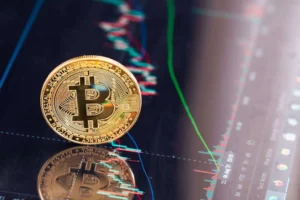Two categories of main agents have maximum influence on the trading area – liquidity providers (LP) and market makers (MM). Although the first group is most often associated with over-the-counter Forex activity, the second institution is frequently present in the share and commodity markets. Both kinds of agents strive to provide seamless interaction between asset owners and buyers, but what are the distinctions between a liquidity provider vs market maker?
At first glance, their purpose may seem similar, but some nuances may be noticed upon closer analysis. In this blog post, we will talk about the concepts of LP and MM and how they affect the performance of players and the industry.
What are Liquidity Providers and Market Makers?
Liquidity is a primary factor on which the prosperity of an area and the stability of value depends. A liquidity provider is an agent, often institutional, whose main task is maintaining easy conversation on an exchange. They monitor the smooth execution of transactions, creating a continuous flow of purchase and sell orders and neutralizing the effect of sales or purchases of a considerable batch of cryptocurrency, securities, or other assets on their actual value.
Providing liquidity involves bringing resources to market and ensuring members may purchase or sell them without significantly decreasing value. Such suppliers can be individuals, institutional entities, or specialized organizations that place part of the resources in the exchange order book.
Market makers are subjects of the financial industry; they regulate the costs of the purchase and sale of assets. MMs do their best to profit from the spread, the distinction between these two costs, by regularly updating the bid and ask costs. This constant listing makes the sector more liquid by reducing bid-ask spreads and stimulating commercial activity.
There are multiple levels of MMs, all striving to bridge the gap between purchasers and sellers, creating a seamless flow of trades and decreasing cost volatility.


Turnkey Brokerage Solution For Your Business
Get the most profitable fully licensed fx/crypto brokerage software or ready-to-operate business in 48 hours. Best-in-class web & mobile trading platforms, sales-driven CRM, full integration with MT4/5, and 150+ payment providers.
Key Differences and Features Between a Liquidity Provider and a Market Maker
Now that we have a clear understanding of the different categories of market actors. It is necessary to analyze their functions and recognize the distinctions between liquidity provider vs market maker.
Liquidity providers
First, let’s look at the distinctive properties of LPs in terms of crypto exchange:
- Suppose we are talking about the cryptocurrency area, which has been actively developing recently in terms of LP and MM. In that case, it should be clarified LPs have one interesting feature: they prefer liquidity pools instead of peer-to-peer order books to generate market liquidity. The structure of the books relies on bid-ask spreads, while liquidity pools operate on pairs of deposit assets.
- Any participant who bids on this digital money may form a liquidity pool. Any pair of tokens receives a novel market offered by such asset pools. The cost of such pairs of crypto coins is assessed by the participant who forms the pool and places the first bid.
Since, unlike MM, LP does not have an order book, the value of digital money pairs is maintained relative to a global price level utilizing a mathematical algorithm connected with smart contracts. The change in value depends on commercial volumes and the parameters of liquidity pools. As a result, LPs earn LP tokens, and holders receive fees from participants who utilize the services of the online trading platform.
Classic marketplaces:
- Regarding the Forex market, LPs are entities that assist A-book brokers in executing their counterparty’s orders, whereby the brokers pass on the orders placed by their customers to the LP. At the same time, MM collaborates with the B-Book brokerage type and takes on market risks without adding LPs.
- LPs are more transparent and have a better reputation than MMs, although they do not make as much excess profit. The LP system can be successful if brokerage earnings are distributed correctly and there is a precise plan to involve the maximum number of active players in the area and provide them with additional services to increase profitability.
Note that LPs, not MMs, made the maximum contribution to stabilizing the industry during the recent financial crises. Their liquidity made it possible to maintain the stable activity of marketplaces during stressful periods to prevent complete collapse. LPs helped the industry return to previous activity levels by providing ease of conversion and stabilizing prices.
Interestingly, LPs have no conflict of interest with traders’ positions since they are not on the opposite side. Simultaneously, MM occasionally has a conflict of interest since they can make money from customer losses.

Market makers
MMs also contribute to liquidity, but unlike LPs, they often act as middlemen that connect asset owners and purchasers. They regularly set bids, ask for costs for various assets, and are willing to purchase or sell them at the quoted value. These agents provide a stabilized flow of operations, performing as middlemen.
MMs can be divided into several classes: Tier 1 and Tier 2 players.
- The first level’s MM includes key banks united in a group called Tier 1. They interact with well-known marketplaces, enter into agreements, and undertake to monitor the turnover of instruments and to balance supply and demand. In addition to banks, this category also includes key brokers and dealers, private funds, etc.
- MM of the second level are middlemen who provide access to the area for standard investors and small brokers. They utilize their liquidity but can borrow resources from Tier 1 LPs if necessary.
Third-party MMs are considered a beneficial alternative to standard MMs. Unlike LPs, one of the sides to this activity is a hedge fund, which acts as an arbitrageur to achieve ease of conversion from other marketplaces, hedging its positions in different systems. MMs negotiate transactions with the exchange where they operate, demanding a special portion of earnings to generate liquidity. Marketplaces can make up the difference by agreement if MM’s gain exceeds a pre-agreed level. Simultaneously, LPs prefer to enter into contractual agreements with aggregators or brokers.
The distinction between the best offer, that is, the maximum sum a customer is willing to pay for an asset, and the best demand (the optimal or lowest value of a financial instrument) is the source of earnings for these agents. We know this parameter as a bid-ask spread. Simply put, you need to pay a minimum price for a financial instrument and then demand a more considerable sum. However, the exchange sum decreases as demand grows, increasing MM’s earnings from the current operation. As a result, the transaction interval increases, which creates additional risks.
LPs often offer tighter spreads because they have access to different channels of liquidity, while MMs offer wider spreads, although some work with fixed rates.
In reality, many trading portals are striving to combine the efforts of MM and LP to guarantee the necessary liquidity for market players. By partnering with both intermediaries, participants benefit from the immediate liquidity MMs offer and the affordable prices generated by LPs. Combining such properties composes an adequate commercial space where all participants can instantly conclude deals at optimal costs.
Benefits of Using Liquidity Providers and Market Makers
Although, as we can see, liquidity provider vs market maker varies greatly, their roles are similar. Such intermediaries shape the system’s liquidity to ensure uninterrupted commercial transactions by creating optimal sizes of trading process. Utilizing the services of both categories of agents will provide significant profits:
- Optimal liquidity: with improved conversation, system participants can fulfill orders instantly and at a favorable price.
- Cost stability: adding intermediaries ensures price stability. It avoids sudden price changes so participants may get better deals.
- Reducing operating spending: such agents allow a decrease in operating expenditures by reducing the distinction between the cost of purchasing and selling. This narrowing will enable participants to cut costs when purchasing or selling financial instruments.
- Market accessibility: these intermediaries ensure traders may access markets and carry out operations across different assets, even in sectors with low liquidity. Such accessibility makes the area more accessible and creates additional opportunities for participants.
- Dealing with markets: MMs interact with market risks by investing their capital to facilitate commercial operations. Such risk reduction protects market participants from sudden price changes and guarantees a stable commercial space.
Essentially, LP is a broader concept covering institutions that positively influence liquidity parameters. Simultaneously, the market maker is a special kind of liquidity that participates in the system’s functioning and indicates the value of assets to simplify the purchasing and selling process. As trading evolves, the relationship dynamics between LPs and MMs will play an increasingly essential role in shaping the future of interactions with various resources.






